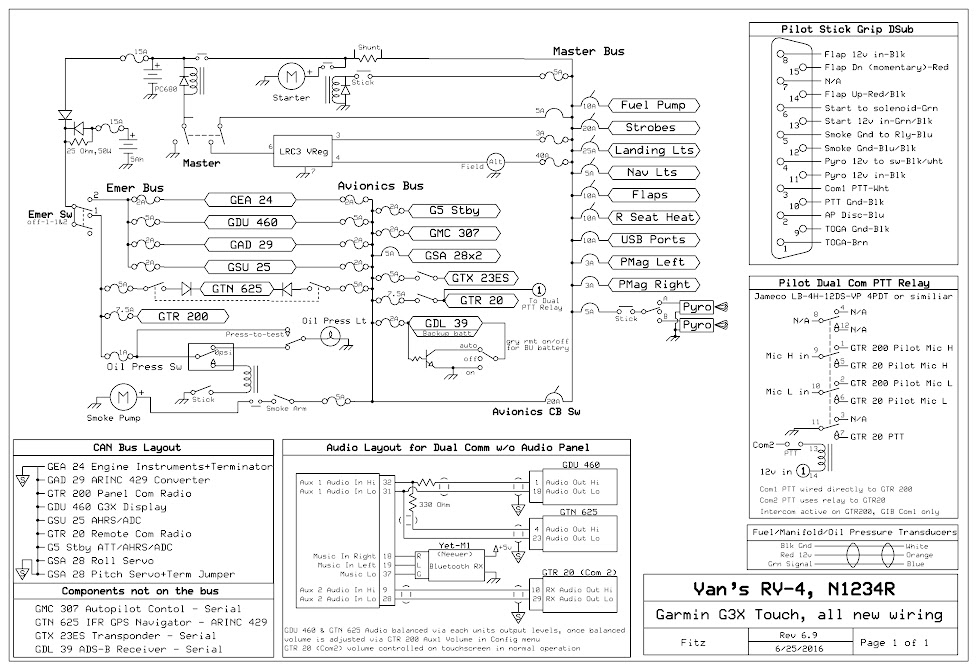Just finished wiring my RV-4 panel up, Garmin G3X everything. GPS-only IFR, redundant on almost all fronts, I think I have all my bases covered except dual engines.
Wanted to see what the masses thought about how we ended up designing it. I had a lot of help from some very smart people, many many thanks are in order. Especially Paige Hoffart and Jim Beyer, lots of their brain-bytes when into making this reality.
Some neat things on this are:
-$30 backup battery system instead of >$300 backup battery system.
-$5 bluetooth audio + $10 dual comm relay + built-in intercom instead of >$1000 audio panel, and also takes up way less space which was very important to me.
-$5 circuit designed by Paige to enable automatic remote on-off functionality of GDL39 with battery pack. Folks familiar with the battery pack know that it turns on when power is applied but doesn't turn off unless the power button is pressed, or the remote on/off wire is grounded and then ungrounded once power is applied. This automates that process.

I just can't figure out how to get it to post an uncompressed image, so here's the full Res on Google Photos
Questions/comments/thoughts?
Jon
Wanted to see what the masses thought about how we ended up designing it. I had a lot of help from some very smart people, many many thanks are in order. Especially Paige Hoffart and Jim Beyer, lots of their brain-bytes when into making this reality.
Some neat things on this are:
-$30 backup battery system instead of >$300 backup battery system.
-$5 bluetooth audio + $10 dual comm relay + built-in intercom instead of >$1000 audio panel, and also takes up way less space which was very important to me.
-$5 circuit designed by Paige to enable automatic remote on-off functionality of GDL39 with battery pack. Folks familiar with the battery pack know that it turns on when power is applied but doesn't turn off unless the power button is pressed, or the remote on/off wire is grounded and then ungrounded once power is applied. This automates that process.
I just can't figure out how to get it to post an uncompressed image, so here's the full Res on Google Photos
Questions/comments/thoughts?
Jon




